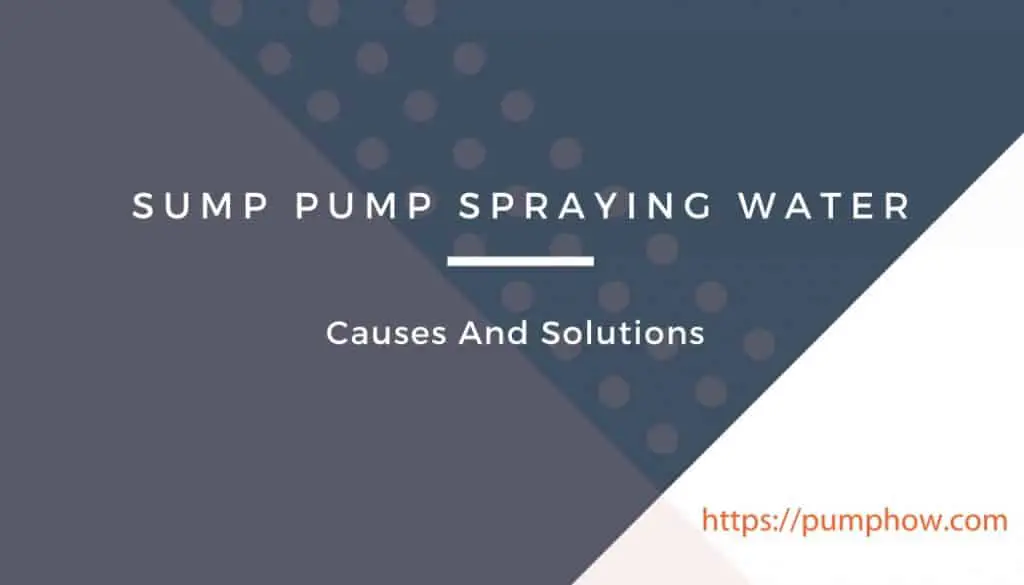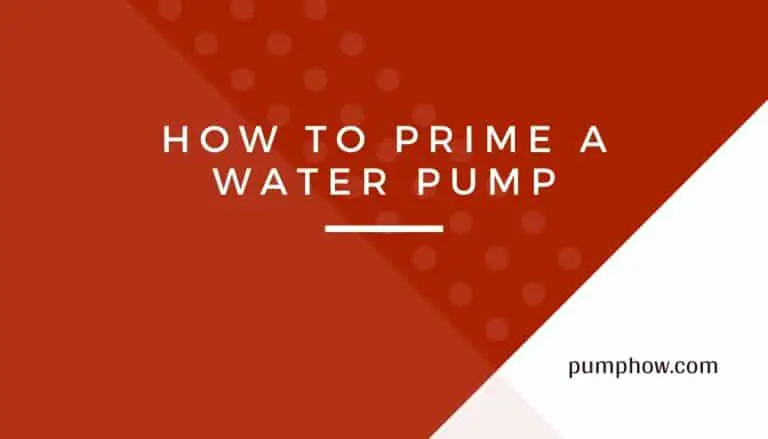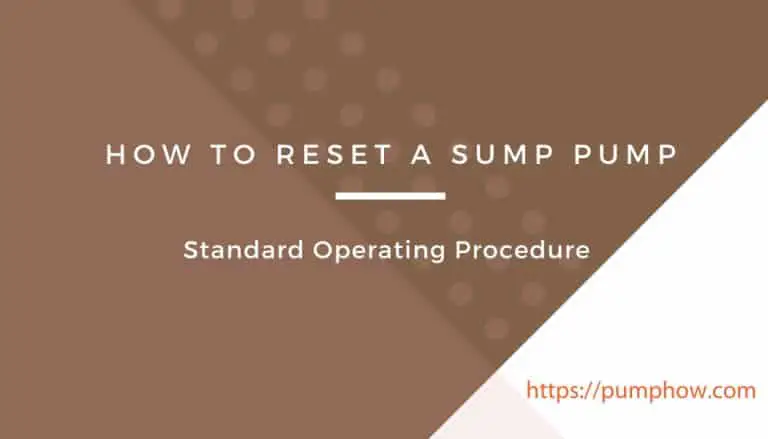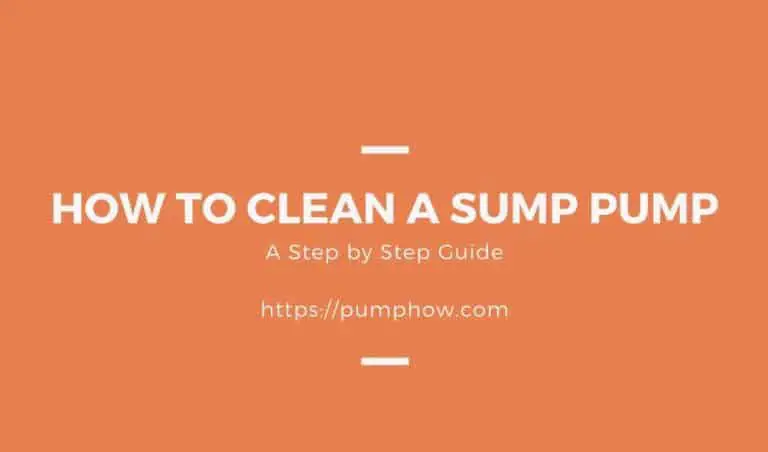Sometimes, part of our home’s plumbing or basement waterproofing systems works in an unexpected way. That your sump pump keeps on spraying water is one of those examples.
The sump pump is designed to keep your basement away from moisture, not spray water anywhere. Whether or not you allow that to happen, the pump isn’t going to stop spraying unless you do something.
But what exactly is the reason behind the sump pump spraying water issue? Well, any of these six things might have happened, but you must figure out the real one and take appropriate measures.
- Leaky seal between the discharge line and the pump
- Faulty piping connections/joints
- Release/Weep hole
- Malfunctioning check valve
- Electrical problems
- An overwhelmed pump
- Wrong Pit Size
In this article, you’ll know about each of these issues thoroughly and the right measures to take to deal with them.

3 Common Issues Behind A Sump Pump Spraying Water
These problems are quite common. On most occasions, they require small purchases and efforts for a little amount of time.
1. Leaky/Loose Seal
Special seals are used to connect a sump pump to a discharge line. Over time, those seals may become loose owing to regular uses, different disturbances, pressure changes, and seismic factors.
The seals that connect a check valve to a discharge line need to be checked carefully because the leaks could be on more than one location. Inspect the seals on the drain lines too. All you can think of is getting new seals which come at a small price.
2. Faults in the Piping Connections
PVC pipes aren’t built without care. They’re tough but not essentially unsusceptible to holes or leaks. It’s possible for PVC materials or similar items to crack in the course of daily wear and tear.
Inspect all the connections and joints to find a hole because leaks are likely to occur in those areas. Don’t count on repair efforts when you see leaks. Replace the PVCs if that’s not a trouble.
If your sump system use pipes that are older than 4-5 years, you should think about other reasons. You may choose cast iron discharge pipes which may not develop leaks so easily, but you still have to worry about corrosion.
3. Faulty Check Valve
A check valve is required to prevent water that has already been pumped from flowing all the way back to the sump pit. When it fails to do this, the spraying water is likely to flow back only to cause a serious problem in the basement.
Another scenario involving a faulty check valve can be that it has just one connector which got loose enough to spray water. Try to get a valve that has a connector on both of its ends.
Problem That Occurs Rarely: Electrical Issue
Although electrical problems aren’t rare, their association with the “spraying water” issue is not very likely. However, this one can’t be ruled out.
A sump pump that can’t receive an adequate amount of electrical power may operate but not at expected efficiency. Maybe, the wiring isn’t correctly done or something went wrong all on a sudden. Sometimes, the fault may be with the pump itself.
You should bring the issue to an electrician or sump pump specialist who can look into it and offer the right solutions. Don’t try on your own unless you have a strong understanding of the whole thing.
Problems That Involve Considerable Efforts: Overwhelmed Sump Pump & Wrong Pit Size
Both an overwhelmed sump pump and an oversized/undersized sump pit can be responsible for the issue. They might require you to spend hundreds of dollars and/or hours of hard work.
All sump pumps don’t come with the capacity to pump the same volume of water, and all homeowners aren’t equally aware of the right size of the pump. If you’re sure that the above problems have been dealt with and the “spraying” issue still persists, the pump perhaps needs to be checked.
A sump pump that cannot handle the volume of water presented by the basement isn’t a perfect one, no matter how strong or expensive it is. That overwhelmed pump may be the cause of water being sprayed incessantly. Also, an undersized pump cannot be reliable in the event of a flood.
As much as a struggling sump pump is responsible for spraying water, the size of the sump pit isn’t out of the picture. Too small a pit cannot hold as much water as the situation requires it to. Similarly, too large a pit isn’t good either.
To determine the correct size of the pit, you should consider some factors like the capacity of the pump and the volume of water that accumulates per hour. We’ve had a detailed sump pump installation guide where we’ve talked about the essential measurements for everything including the sump pit or basin.
A Release/Weep Hole Is NOT Always a Problem
You may notice that water is coming from the part where the body of your sump pump rests. It usually happens when a pump has a weep hole, often called a release hole.
Sometimes, your sump works without delivering water, and it happens because the pump ran into an “air-lock” situation. A relief hole becomes useful when it comes to preventing a sump pump from getting into “air-lock”.
However, there’re times when these holes become a problem. A release hole that is in the wrong spot doesn’t work properly. Sometimes, the hole may stop working. Either way, your sump system may spray water.
Unlike most of the sump pump troubles, this one should be handed over to a professional because the job involves drilling into the pump, and you might not just be up for it.
Final Words
Having a sump pump, pedestal, or submersible that sprays all over your place isn’t a pleasant experience because the water being sprayed may contain harmful bacteria and unhealthy organisms, needless to say, additional moisture issues to your basement.
So, you shouldn’t just put it off even though the cause might be as simple as a useless weep hole or as substantial as the replacement of a pump.
Shoot a message if you’ve got a specific question to ask about the “spraying” problem or anything about a residential sump system.






